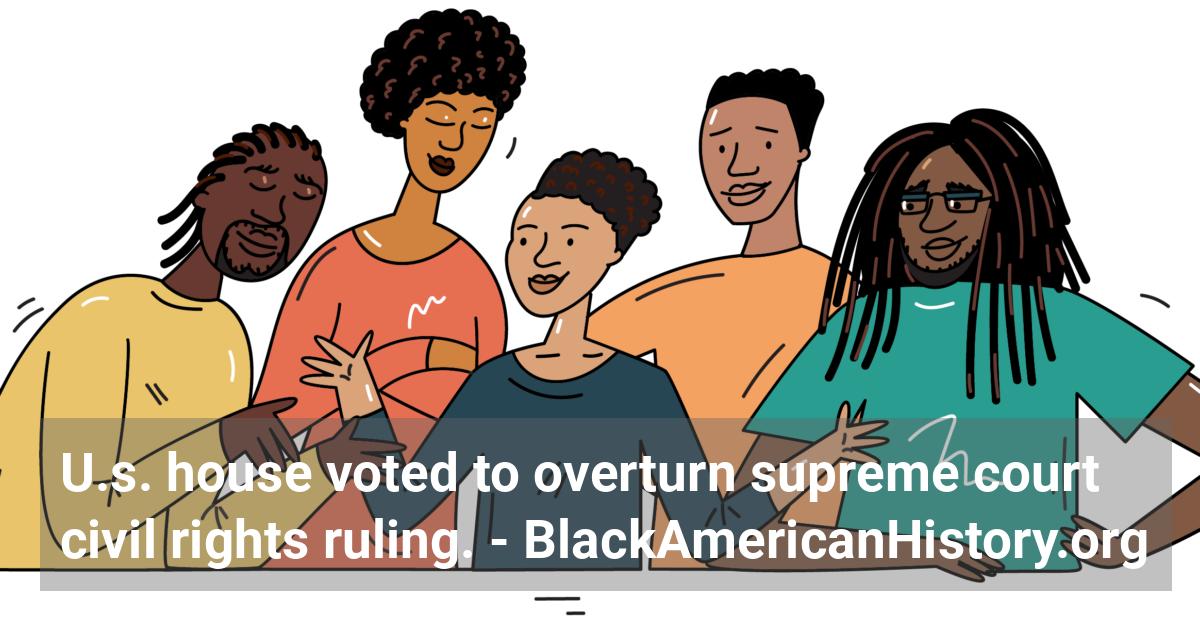Home / Full timeline / The U.S. House of Representatives house votes to overturn a U.S. Supreme Court civil rights ruling that limits four laws banning discrimination based on age, race, sex, or handicap.
 The U.S. House of Representatives house votes to overturn a U.S. Supreme Court civil rights ruling that limits four laws banning discrimination based on age, race, sex, or handicap.
The U.S. House of Representatives house votes to overturn a U.S. Supreme Court civil rights ruling that limits four laws banning discrimination based on age, race, sex, or handicap.
1988 (Mar 20)
The U.S. House of Representatives voted 315-98 to overturn a U.S. Supreme Court ruling that limited four laws banning discrimination based on age, race, sex, or handicap. The same measure had been approved by the U.S. Senate on January 28, by a vote of 75-14. The legislation, known as the Civil Rights Restoration Act, requires that any institution or entity receiving federal funds, including school systems, corporations, and health facilities, must comply with civil rights statutes. It allows limited exemptions for small businesses and for institutions controlled by religious organizations. The Supreme Court, in a 1984 case involving Grove City College in Pennsylvania, had ruled that only a program or activity receiving federal funds was subject to the federal anti-bias laws. Although the case focused on a 1972 law that prohibited sex discrimination in education, the Court's decision also applied to three other civil rights laws that contained the same language at issue in the Grove City College case. After the decision, federal agencies had dropped or limited hundreds of civil rights cases. In October 1987, a federal court of appeals rejected a lawsuit by a group in Alabama, which had been joined by the federal government against the state school system. That court held that only the "allegedly discriminatory program could be sued."
References:
- • Hornsby, Alton. Chronology of African-American History: Significant Events and People from 1619 to the Present. Detroit: Gale Research, 1995.
